Spatio-Temporal Anomaly Detection with Graph Networks for Data Quality Monitoring of the Hadron Calorimeter
Abstract
1. Introduction
2. Background
2.1. Data Quality Monitoring of the CMS Experiment
2.2. Readout Boxes of the Hadron Calorimeter
3. Data Set Description
4. Methodology
4.1. Data Preprocessing
4.1.1. Digi-Occupancy Map Renormalization
4.1.2. Adjacency Matrix Generation for Graph Network
4.2. Anomaly Detection Modeling with Autoencoder Model
4.3. Autoencoder Model Architecture
4.4. Model Training
5. Experimental Results and Discussion
5.1. Anomaly Detection Performance
5.1.1. Detection of Dead and Hot Channels
5.1.2. Detection of Degrading Channels
5.2. Performance Comparison with Benchmark Models
5.3. Detection of Real Anomalies in the HCAL
5.4. Cost of Model Complexity
6. Conclusions
Supplementary Materials
Author Contributions
Funding
Institutional Review Board Statement
Informed Consent Statement
Data Availability Statement
Acknowledgments
Conflicts of Interest
Abbreviations
| AE | Autoencoder |
| AD | Anomaly detection |
| CERN | The European Organization for Nuclear Research |
| CMS | Compact Muon Solenoid |
| CNN | Convolutional neural networks |
| DL | Deep learning |
| DQM | Data quality monitoring |
| FC | Fully connected neural networks |
| GNN | Graph neural networks |
| GraphSTAD | Graph-based ST AD model |
| HCAL | Hadron Calorimeter |
| HE | HCAL Endcap detector |
| HEP | High-energy physics |
| LHC | Large Hadron Collider |
| LS(s) | Lumisection(s) |
| MAE | Mean absolute error |
| MSE | Mean square error |
| QIE | Charge integrating and encoding |
| RBX | Readout box |
| RNN | Recurrent neural networks |
| SiPM | Silicon photomultipliers |
| ST | Spatio-temporal |
| VAE | Variational autoencoder |
References
- Chalapathy, R.; Chawla, S. Deep learning for anomaly detection: A survey. arXiv 2019, arXiv:1901.03407. [Google Scholar]
- Zhao, Y.; Deng, L.; Chen, X.; Guo, C.; Yang, B.; Kieu, T.; Huang, F.; Pedersen, T.B.; Zheng, K.; Jensen, C.S. A comparative study on unsupervised anomaly detection for time series: Experiments and analysis. arXiv 2022, arXiv:2209.04635. [Google Scholar]
- Cook, A.A.; Mısırlı, G.; Fan, Z. Anomaly detection for IoT time-series data: A survey. IEEE Internet Things J. 2019, 7, 6481–6494. [Google Scholar] [CrossRef]
- Li, X.; Zhang, W.; Ding, Q.; Sun, J.Q. Intelligent rotating machinery fault diagnosis based on deep learning using data augmentation. J. Intell. Manuf. 2020, 31, 433–452. [Google Scholar] [CrossRef]
- Zhou, K.; Tang, J. Harnessing fuzzy neural network for gear fault diagnosis with limited data labels. Int. J. Adv. Manuf. Technol. 2021, 115, 1005–1019. [Google Scholar] [CrossRef]
- Shi, T.; He, Y.; Wang, T.; Li, B. Open switch fault diagnosis method for PWM voltage source rectifier based on deep learning approach. IEEE Access 2019, 7, 66595–66608. [Google Scholar] [CrossRef]
- Wielgosz, M.; Mertik, M.; Skoczeń, A.; De Matteis, E. The model of an anomaly detector for HiLumi LHC magnets based on Recurrent Neural Networks and adaptive quantization. Eng. Appl. Artif. Intell. 2018, 74, 166–185. [Google Scholar] [CrossRef]
- Wielgosz, M.; Skoczeń, A.; Mertik, M. Using LSTM recurrent neural networks for monitoring the LHC superconducting magnets. Nucl. Instrum. Methods Phys. Res. Sect. Accel. Spectrom. Detect. Assoc. Equip. 2017, 867, 40–50. [Google Scholar] [CrossRef]
- Asres, M.W.; Cummings, G.; Parygin, P.; Khukhunaishvili, A.; Toms, M.; Campbell, A.; Cooper, S.I.; Yu, D.; Dittmann, J.; Omlin, C.W. Unsupervised deep variational model for multivariate sensor anomaly detection. In Proceedings of the International Conference on Progress in Informatics and Computing, Online, 17–19 December 2021; IEEE: New York, NY, USA, 2021; pp. 364–371. [Google Scholar]
- Ahmedt-Aristizabal, D.; Armin, M.A.; Denman, S.; Fookes, C.; Petersson, L. Graph-based deep learning for medical diagnosis and analysis: Past, present and future. Sensors 2021, 21, 4758. [Google Scholar] [CrossRef]
- Bakator, M.; Radosav, D. Deep learning and medical diagnosis: A review of literature. Multimodal Technol. Interact. 2018, 2, 47. [Google Scholar] [CrossRef]
- Zhou, B.; Liu, S.; Hooi, B.; Cheng, X.; Ye, J. BeatGAN: Anomalous rhythm detection using adversarially generated time series. In Proceedings of the International Joint Conference on Artificial Intelligence, Macao, China, 10–16 August 2019; pp. 4433–4439. [Google Scholar]
- Cowton, J.; Kyriazakis, I.; Plötz, T.; Bacardit, J. A combined deep learning GRU-autoencoder for the early detection of respiratory disease in pigs using multiple environmental sensors. Sensors 2018, 18, 2521. [Google Scholar] [CrossRef]
- Banković, Z.; Fraga, D.; Moya, J.M.; Vallejo, J.C. Detecting unknown attacks in wireless sensor networks that contain mobile nodes. Sensors 2012, 12, 10834–10850. [Google Scholar] [CrossRef] [PubMed]
- Tišljarić, L.; Fernandes, S.; Carić, T.; Gama, J. Spatiotemporal road traffic anomaly detection: A tensor-based approach. Appl. Sci. 2021, 11, 12017. [Google Scholar] [CrossRef]
- Kim, J.; Yun, J.H.; Kim, H.C. Anomaly detection for industrial control systems using sequence-to-sequence neural networks. In Computer Security; Springer: Berlin/Heidelberg, Germany, 2019; pp. 3–18. [Google Scholar]
- Xu, D.; Yan, Y.; Ricci, E.; Sebe, N. Detecting anomalous events in videos by learning deep representations of appearance and motion. Comput. Vis. Image Underst. 2017, 156, 117–127. [Google Scholar] [CrossRef]
- Chang, Y.; Tu, Z.; Xie, W.; Luo, B.; Zhang, S.; Sui, H.; Yuan, J. Video anomaly detection with spatio-temporal dissociation. Pattern Recognit. 2022, 122, 108213. [Google Scholar] [CrossRef]
- Luo, W.; Liu, W.; Lian, D.; Tang, J.; Duan, L.; Peng, X.; Gao, S. Video anomaly detection with sparse coding inspired deep neural networks. IEEE Trans. Pattern Anal. Mach. Intell. 2019, 43, 1070–1084. [Google Scholar] [CrossRef] [PubMed]
- Wu, P.; Liu, J.; Li, M.; Sun, Y.; Shen, F. Fast sparse coding networks for anomaly detection in videos. Pattern Recognit. 2020, 107, 107515. [Google Scholar] [CrossRef]
- Hasan, M.; Choi, J.; Neumann, J.; Roy-Chowdhury, A.K.; Davis, L.S. Learning temporal regularity in video sequences. In Proceedings of the Computer Vision and Pattern Recognition, Las Vegas, NV, USA, 27–30 June 2016; IEEE: New York, NY, USA, 2016; pp. 733–742. [Google Scholar]
- Ullah, W.; Ullah, A.; Hussain, T.; Khan, Z.A.; Baik, S.W. An efficient anomaly recognition framework using an attention residual LSTM in surveillance videos. Sensors 2021, 21, 2811. [Google Scholar] [CrossRef] [PubMed]
- Hu, J.; Zhu, E.; Wang, S.; Liu, X.; Guo, X.; Yin, J. An efficient and robust unsupervised anomaly detection method using ensemble random projection in surveillance videos. Sensors 2019, 19, 4145. [Google Scholar] [CrossRef]
- Hsu, D. Anomaly detection on graph time series. arXiv 2017, arXiv:1708.02975. [Google Scholar]
- Deng, L.; Lian, D.; Huang, Z.; Chen, E. Graph convolutional adversarial networks for spatiotemporal anomaly detection. IEEE Trans. Neural Netw. Learn. Syst. 2022, 33, 2416–2428. [Google Scholar] [CrossRef] [PubMed]
- Zhang, G.; Zheng, W.; Yin, W.; Lei, W. Improving the resolution and accuracy of groundwater level anomalies using the machine learning-based fusion model in the north China plain. Sensors 2020, 21, 46. [Google Scholar] [CrossRef] [PubMed]
- Liu, Y.; Garg, S.; Nie, J.; Zhang, Y.; Xiong, Z.; Kang, J.; Hossain, M.S. Deep anomaly detection for time-series data in industrial IoT: A communication-efficient on-device federated learning approach. IEEE Internet Things J. 2020, 8, 6348–6358. [Google Scholar] [CrossRef]
- Buzau, M.M.; Tejedor-Aguilera, J.; Cruz-Romero, P.; Gómez-Expósito, A. Hybrid deep neural networks for detection of non-technical losses in electricity smart meters. IEEE Trans. Power Syst. 2019, 35, 1254–1263. [Google Scholar] [CrossRef]
- Choi, Y.; Lim, H.; Choi, H.; Kim, I.J. GAN-based anomaly detection and localization of multivariate time series data for power plant. In Proceedings of the BigComp, Busan, Republic of Korea, 19–22 February 2020; IEEE: New York, NY, USA, 2020; pp. 71–74. [Google Scholar]
- Zhao, H.; Wang, Y.; Duan, J.; Huang, C.; Cao, D.; Tong, Y.; Xu, B.; Bai, J.; Tong, J.; Zhang, Q. Multivariate time-series anomaly detection via graph attention network. arXiv 2020, arXiv:2009.02040. [Google Scholar]
- Guo, Y.; Liao, W.; Wang, Q.; Yu, L.; Ji, T.; Li, P. Multidimensional time series anomaly detection: A GRU-based Gaussian mixture variational autoencoder approach. In Proceedings of the Asian Conference on Machine Learning, Beijing, China, 14–16 November 2018; Proceedings of Machine Learning Research, 2018; pp. 97–112.
- Zhang, C.; Song, D.; Chen, Y.; Feng, X.; Lumezanu, C.; Cheng, W.; Ni, J.; Zong, B.; Chen, H.; Chawla, N.V. A deep neural network for unsupervised anomaly detection and diagnosis in multivariate time series data. In Proceedings of the AAAI Conference on Artificial Intelligence, Honolulu, HI, USA, 27 January–1 February 2019; Association for the Advancement of Artificial Intelligence: Washington, DC, USA, 2019; Volume 33, pp. 1409–1416. [Google Scholar]
- Munir, M.; Siddiqui, S.A.; Dengel, A.; Ahmed, S. DeepAnT: A deep learning approach for unsupervised anomaly detection in time series. IEEE Access 2018, 7, 1991–2005. [Google Scholar] [CrossRef]
- Canizo, M.; Triguero, I.; Conde, A.; Onieva, E. Multi-head CNN–RNN for multi-time series anomaly detection: An industrial case study. Neurocomputing 2019, 363, 246–260. [Google Scholar] [CrossRef]
- Niu, Z.; Yu, K.; Wu, X. LSTM-Based VAE-GAN for time-series anomaly detection. Sensors 2020, 20, 3738. [Google Scholar] [CrossRef]
- Li, D.; Chen, D.; Goh, J.; Ng, S.k. Anomaly detection with generative adversarial networks for multivariate time series. arXiv 2018, arXiv:1809.04758. [Google Scholar]
- Deng, L.; Chen, X.; Zhao, Y.; Zheng, K. HIFI: Anomaly detection for multivariate time series with high-order feature interactions. In Proceedings of the International Conference on Database Systems for Advanced Applications, Taipei, Taiwan, 11–14 April 2021; Springer: Berlin/Heidelberg, Germany, 2021; pp. 641–649. [Google Scholar]
- Deng, A.; Hooi, B. Graph neural network-based anomaly detection in multivariate time series. In Proceedings of the AAAI Conference on Artificial Intelligence, Virtually, 2–9 February 2021; Association for the Advancement of Artificial Intelligence: Washington, DC, USA, 2021; Volume 35, pp. 4027–4035. [Google Scholar]
- Jiang, L.; Xu, H.; Liu, J.; Shen, X.; Lu, S.; Shi, Z. Anomaly detection of industrial multi-sensor signals based on enhanced spatiotemporal features. Neural Comput. Appl. 2022, 34, 8465–8477. [Google Scholar] [CrossRef]
- Collaboration, T.C.; Chatrchyan, S.; Hmayakyan, G.; Khachatryan, V.; Sirunyan, A.; Adam, W.; Bauer, T.; Bergauer, T.; Bergauer, H.; Dragicevic, M.; et al. The CMS experiment at the CERN LHC. J. Instrum. 2008, 3, S08004. [Google Scholar] [CrossRef]
- Duarte, J.; Vlimant, J.R. Graph neural networks for particle tracking and reconstruction. In Artificial Intelligence for High Energy Physics; World Scientific: Singapore, 2022; pp. 387–436. [Google Scholar]
- Atluri, G.; Karpatne, A.; Kumar, V. Spatio-temporal data mining: A survey of problems and methods. ACM Comput. Surv. 2018, 51, 1–41. [Google Scholar] [CrossRef]
- Evans, L.; Bryant, P. LHC machine. J. Instrum. 2008, 3, S08001. [Google Scholar] [CrossRef]
- Heuer, R.D. The future of the Large Hadron Collider and CERN. Philos. Trans. R. Soc. A Math. Phys. Eng. Sci. 2012, 370, 986–994. [Google Scholar] [CrossRef] [PubMed]
- Azzolini, V.; Bugelskis, D.; Hreus, T.; Maeshima, K.; Fernandez, M.J.; Norkus, A.; Fraser, P.J.; Rovere, M.; Schneider, M.A. The data quality monitoring software for the CMS experiment at the LHC: Past, present and future. Proc. Eur. Phys. J. Web Conf. 2019, 214, 02003. [Google Scholar] [CrossRef]
- Tuura, L.; Meyer, A.; Segoni, I.; Della Ricca, G. CMS data quality monitoring: Systems and experiences. Proc. J. Phys. Conf. Ser. 2010, 219, 072020. [Google Scholar] [CrossRef]
- De Guio, F.; Collaboration, T.C. The CMS data quality monitoring software: Experience and future prospects. Proc. J. Phys. Conf. Ser. 2014, 513, 032024. [Google Scholar] [CrossRef]
- Azzolin, V.; Andrews, M.; Cerminara, G.; Dev, N.; Jessop, C.; Marinelli, N.; Mudholkar, T.; Pierini, M.; Pol, A.; Vlimant, J.R. Improving data quality monitoring via a partnership of technologies and resources between the CMS experiment at CERN and industry. Proc. Eur. Phys. J. Web Conf. 2019, 214, 01007. [Google Scholar] [CrossRef][Green Version]
- Pol, A.A.; Cerminara, G.; Germain, C.; Pierini, M.; Seth, A. Detector monitoring with artificial neural networks at the CMS experiment at the CERN Large Hadron Collider. Comput. Softw. Big Sci. 2019, 3, 3. [Google Scholar] [CrossRef]
- Viazlo, O. (Florida State University, Tallahassee, FL, USA); Collaboration, T.C. (CERN, Meyrin, Switzerland) Non-uniformity in HE digi-occupancy distributions. CERN-CMS private communications, 2022.
- Chahal, G.; Collaboration, T.C.H. Data Monte Carlo preparation in CMS. In Proceedings of the IPPP Organised Workshops and Conferences, London, UK, 16–18 April 2018; Durham University: Durham, UK; Imperial College: London, UK, 2018. [Google Scholar]
- Pol, A.A.; Azzolini, V.; Cerminara, G.; De Guio, F.; Franzoni, G.; Pierini, M.; Sirokỳ, F.; Vlimant, J.R. Anomaly detection using Deep Autoencoders for the assessment of the quality of the data acquired by the CMS experiment. Proc. Eur. Phys. J. Web Conf. 2019, 214, 06008. [Google Scholar] [CrossRef]
- Shlomi, J.; Battaglia, P.; Vlimant, J.R. Graph neural networks in particle physics. Mach. Learn. Sci. Technol. 2020, 2, 021001. [Google Scholar] [CrossRef]
- Qasim, S.R.; Kieseler, J.; Iiyama, Y.; Pierini, M. Learning representations of irregular particle-detector geometry with distance-weighted graph networks. Eur. Phys. J. C 2019, 79, 1–11. [Google Scholar] [CrossRef]
- Martínez, J.A.; Cerri, O.; Spiropulu, M.; Vlimant, J.; Pierini, M. Pileup mitigation at the Large Hadron Collider with graph neural networks. Eur. Phys. J. Plus 2019, 134, 333. [Google Scholar] [CrossRef]
- Bruna, J.; Zaremba, W.; Szlam, A.; LeCun, Y. Spectral networks and locally connected networks on graphs. arXiv 2013, arXiv:1312.6203. [Google Scholar]
- Kipf, T.N.; Welling, M. Semi-supervised classification with graph convolutional networks. arXiv 2016, arXiv:1609.02907. [Google Scholar]
- Focardi, E. Status of the CMS detector. Phys. Procedia 2012, 37, 119–127. [Google Scholar] [CrossRef]
- Strobbe, N. The upgrade of the CMS Hadron Calorimeter with Silicon photomultipliers. J. Instrum. 2017, 12, C01080. [Google Scholar] [CrossRef]
- Rapsevicius, V.; CMS DQM Group. CMS run registry: Data certification bookkeeping and publication system. Proc. J. Phys. Conf. Ser. 2011, 331, 042038. [Google Scholar] [CrossRef]
- Kingma, D.P.; Welling, M. Auto-encoding variational bayes. arXiv 2013, arXiv:1312.6114. [Google Scholar]
- An, J.; Cho, S. Variational autoencoder based anomaly detection using reconstruction probability. Spec. Lect. IE 2015, 2, 1–18. [Google Scholar]
- Chadha, G.S.; Rabbani, A.; Schwung, A. Comparison of semi-supervised deep neural networks for anomaly detection in industrial processes. In Proceedings of the International Conference on Industrial Informatics, Helsinki-Espoo, Finland, 22–25 July 2019; IEEE: New York, NY, USA, 2019; Volume 1, pp. 214–219. [Google Scholar]
- Wang, M.; Zheng, D.; Ye, Z.; Gan, Q.; Li, M.; Song, X.; Zhou, J.; Ma, C.; Yu, L.; Gai, Y.; et al. Deep Graph Library: A graph-centric, highly-performant package for graph neural networks. arXiv 2019, arXiv:1909.01315. [Google Scholar]
- Zeiler, M.D.; Krishnan, D.; Taylor, G.W.; Fergus, R. Deconvolutional networks. In Proceedings of the 2010 IEEE Computer Society Conference on Computer Vision and Pattern Recognition, San Francisco, CA, USA, 13–18 June 2010; IEEE: New York, NY, USA, 2010; pp. 2528–2535. [Google Scholar]
- Smith, L.N.; Topin, N. Super-convergence: Very fast training of neural networks using large learning rates. In Proceedings of the Artificial Intelligence and Machine Learning for Multi-Domain Operations Applications, Baltimore, MD, USA, 15–17 April 2019; SPIE: Bellingham, WA, USA, 2019; Volume 11006, pp. 369–386. [Google Scholar]

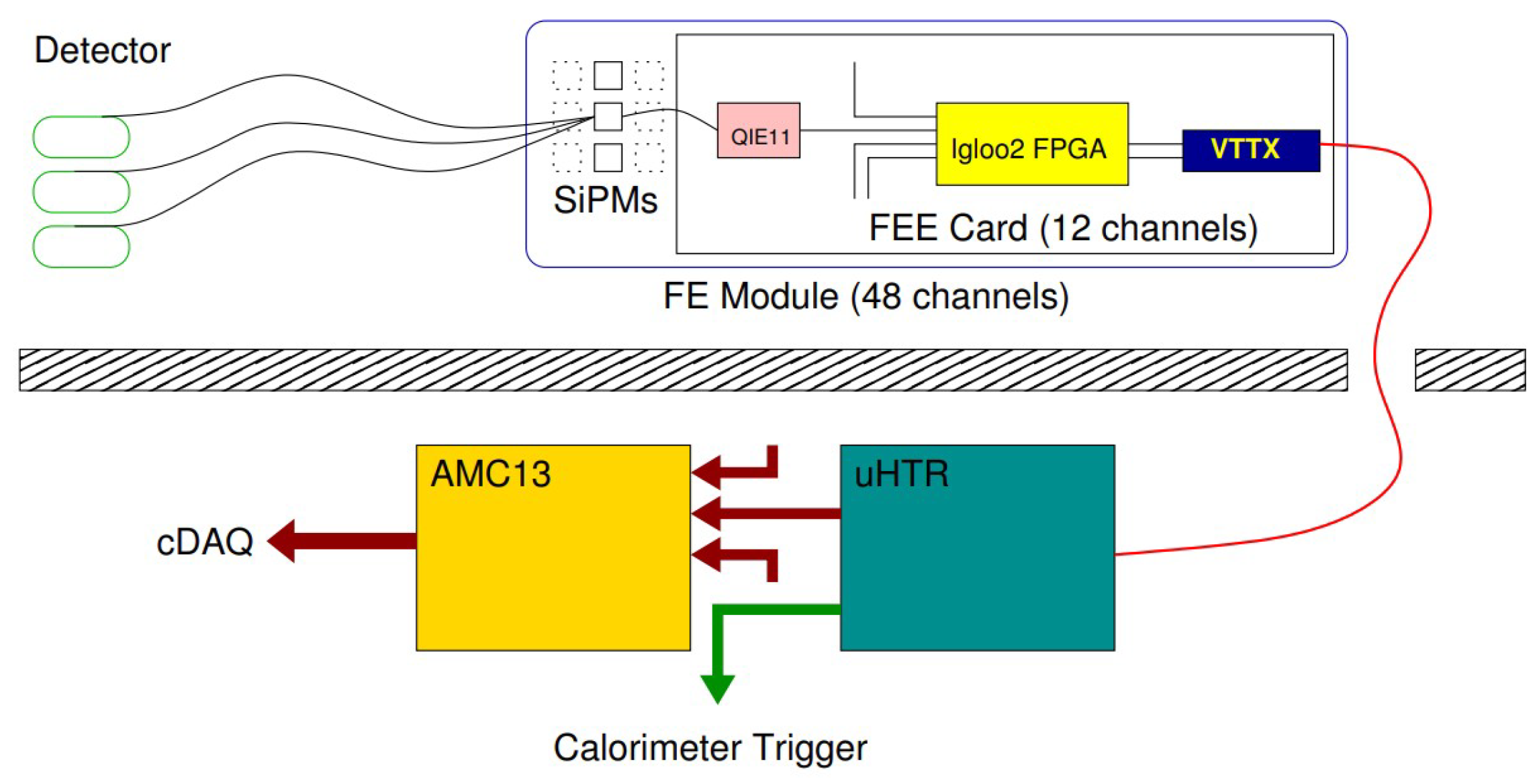
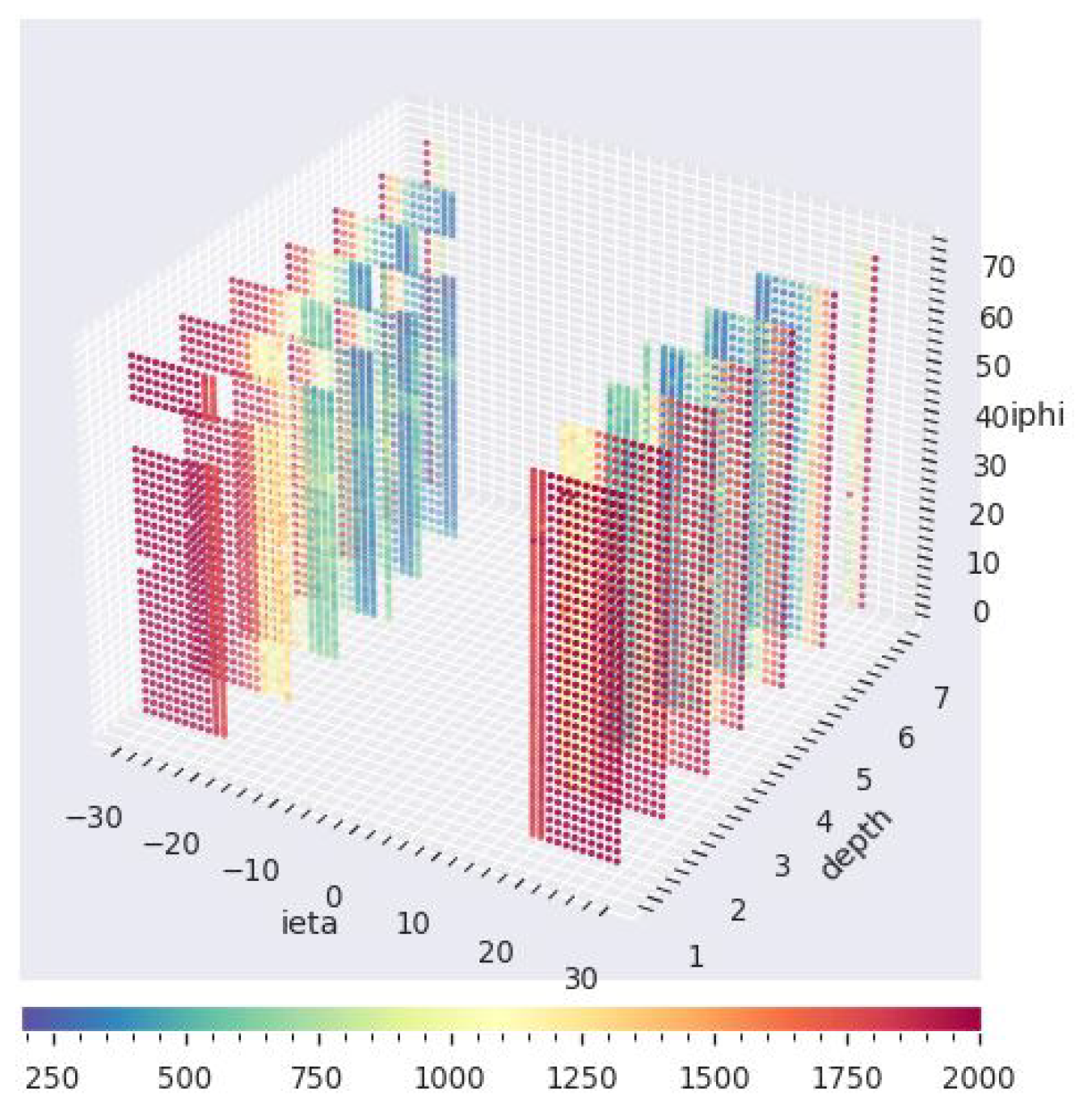
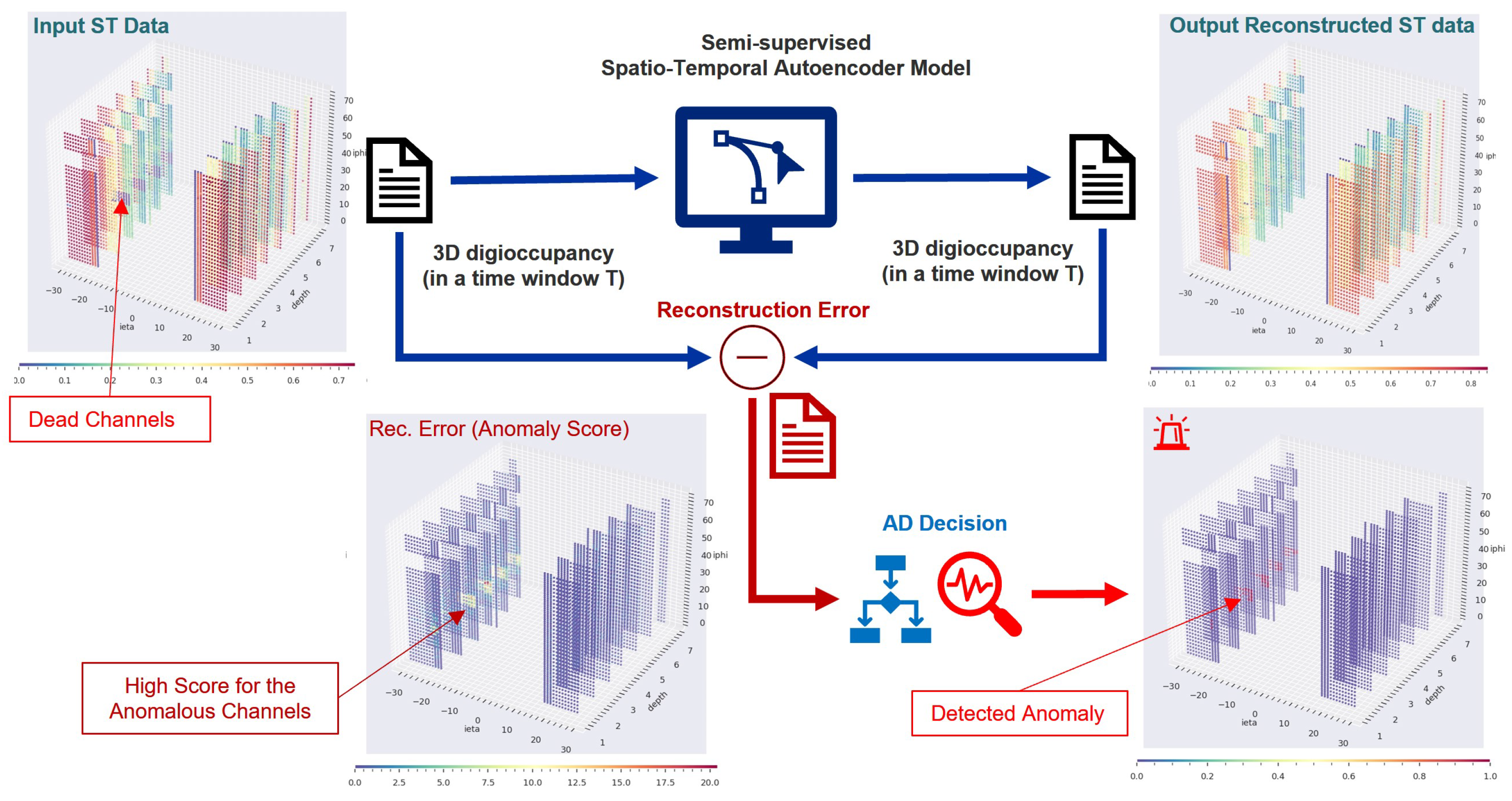
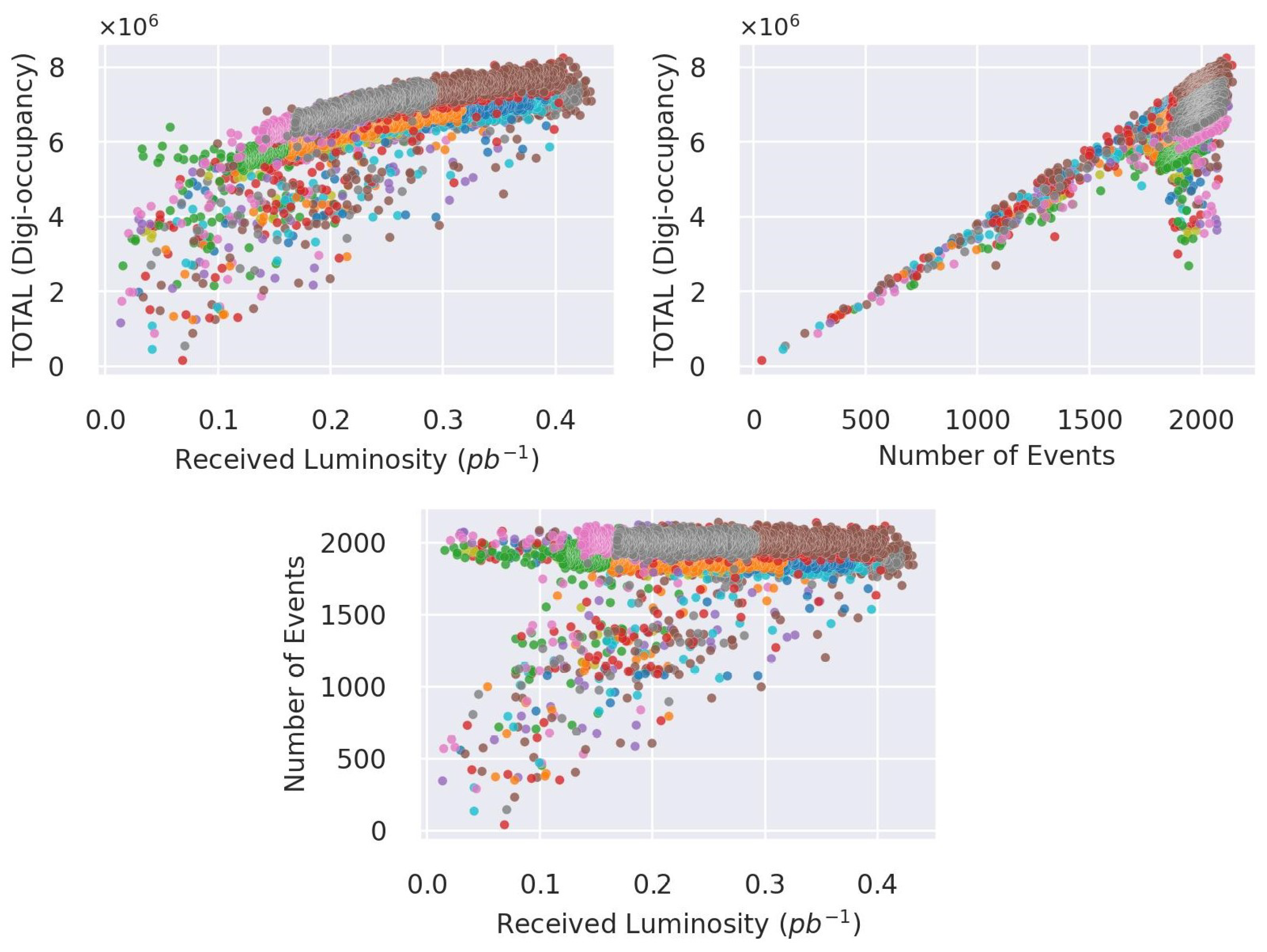
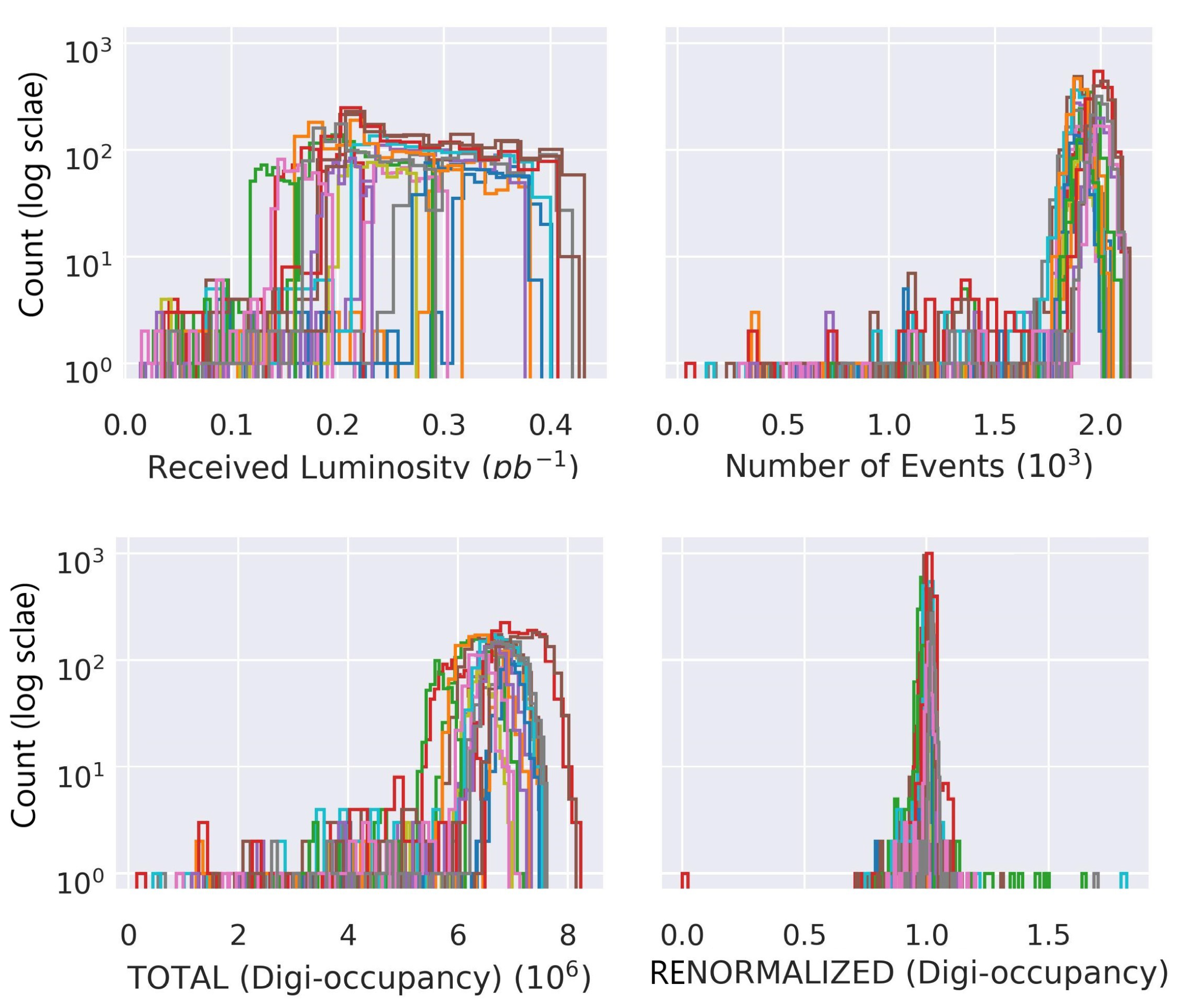

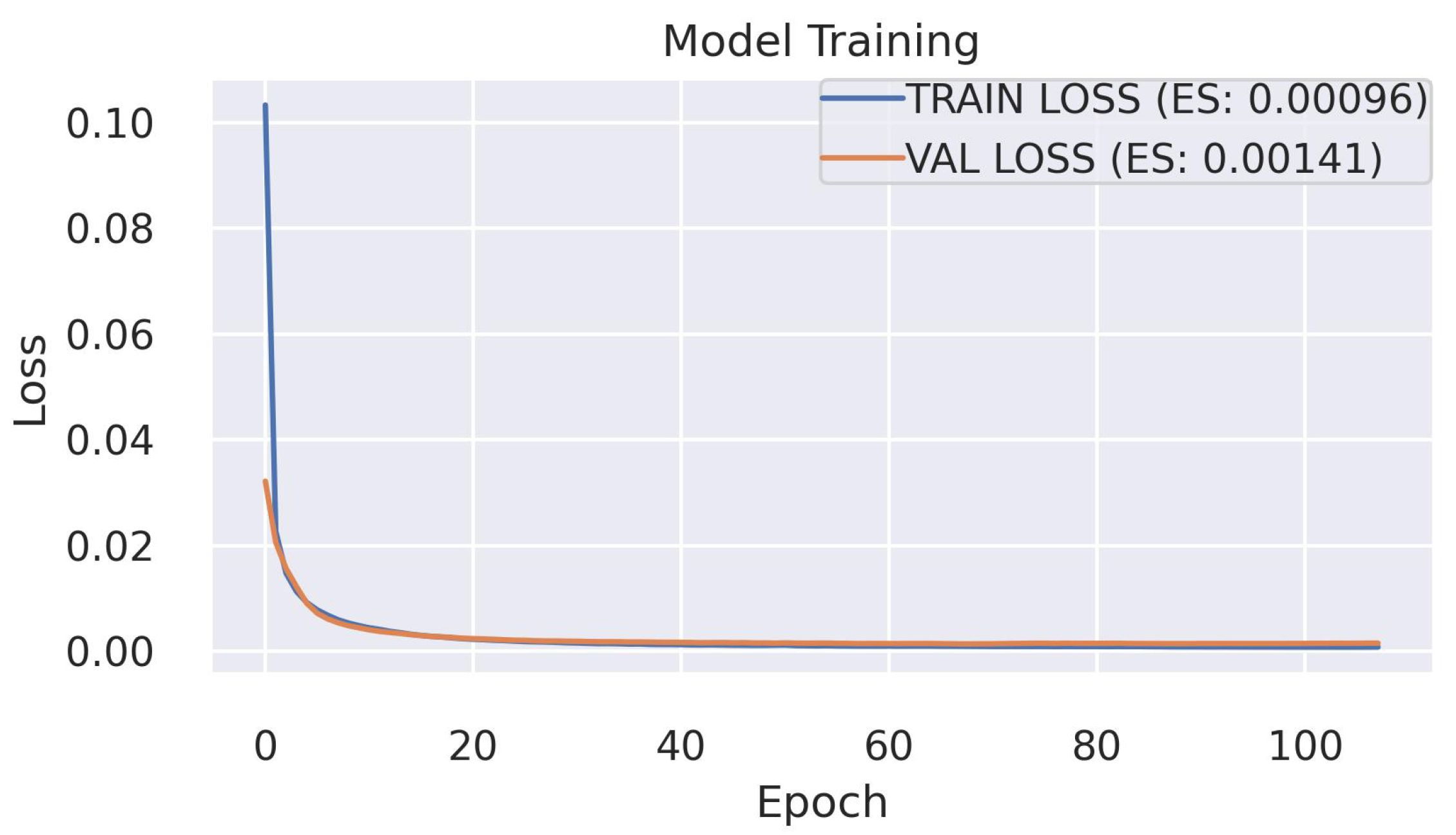



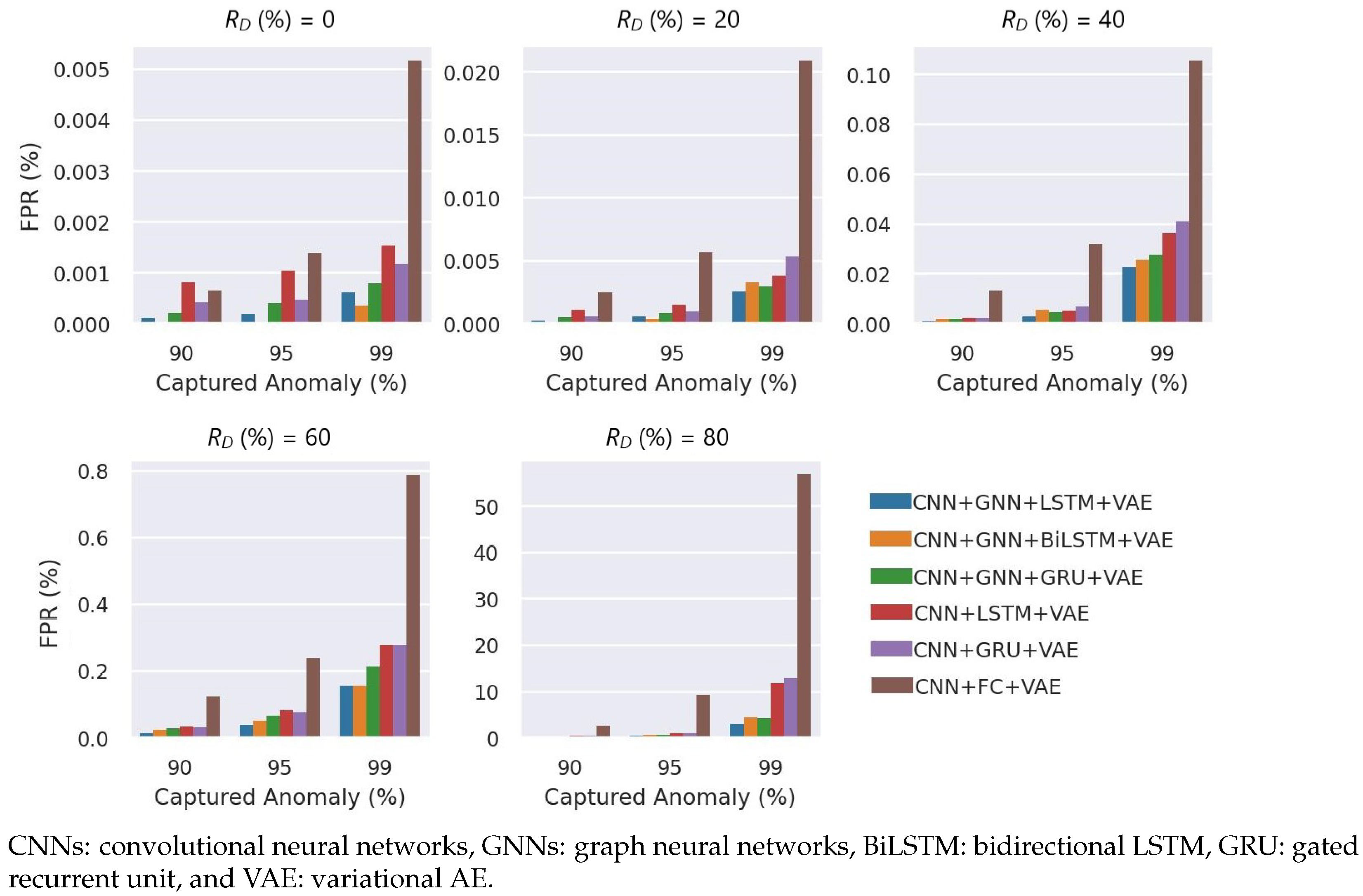


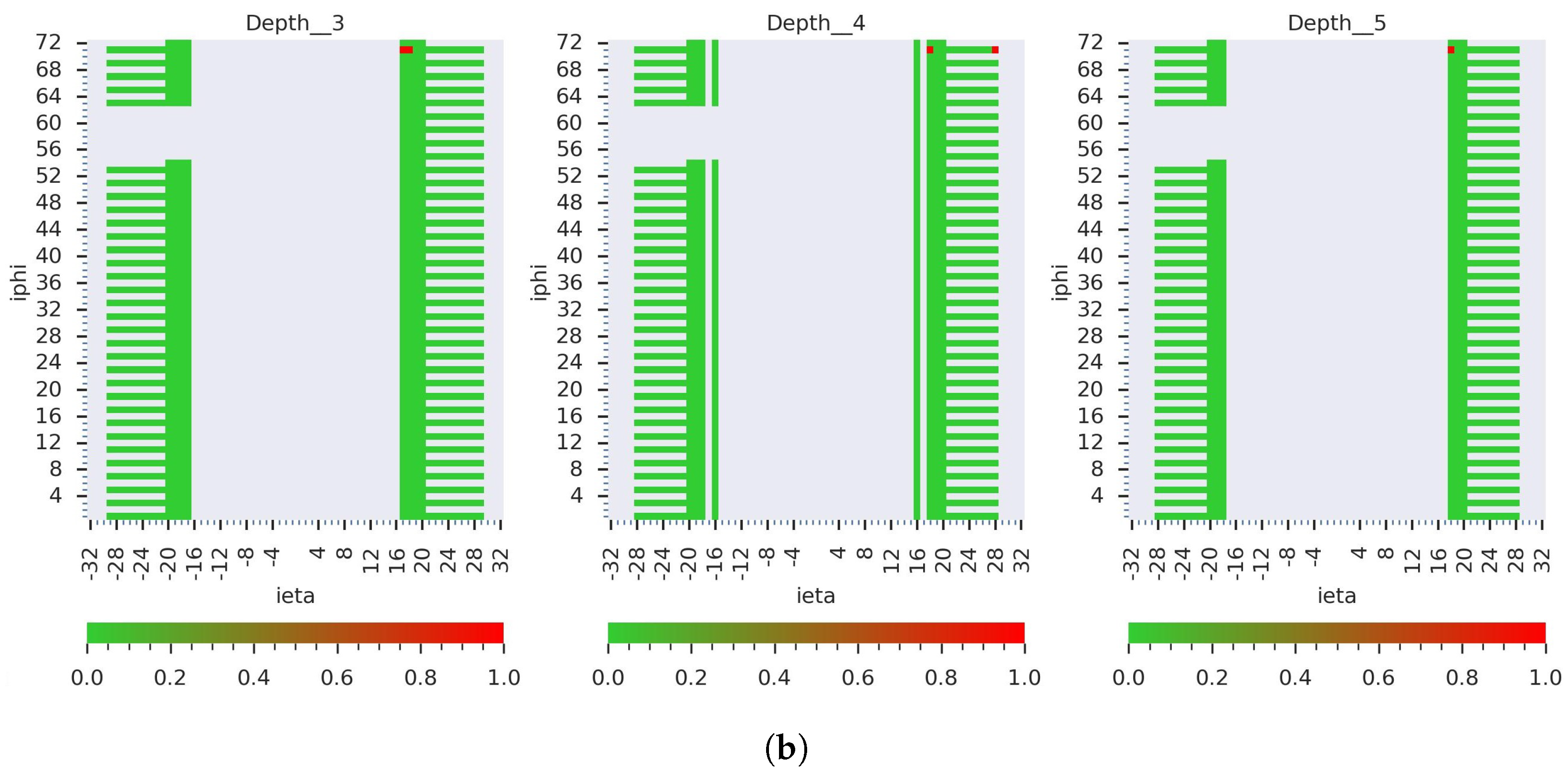
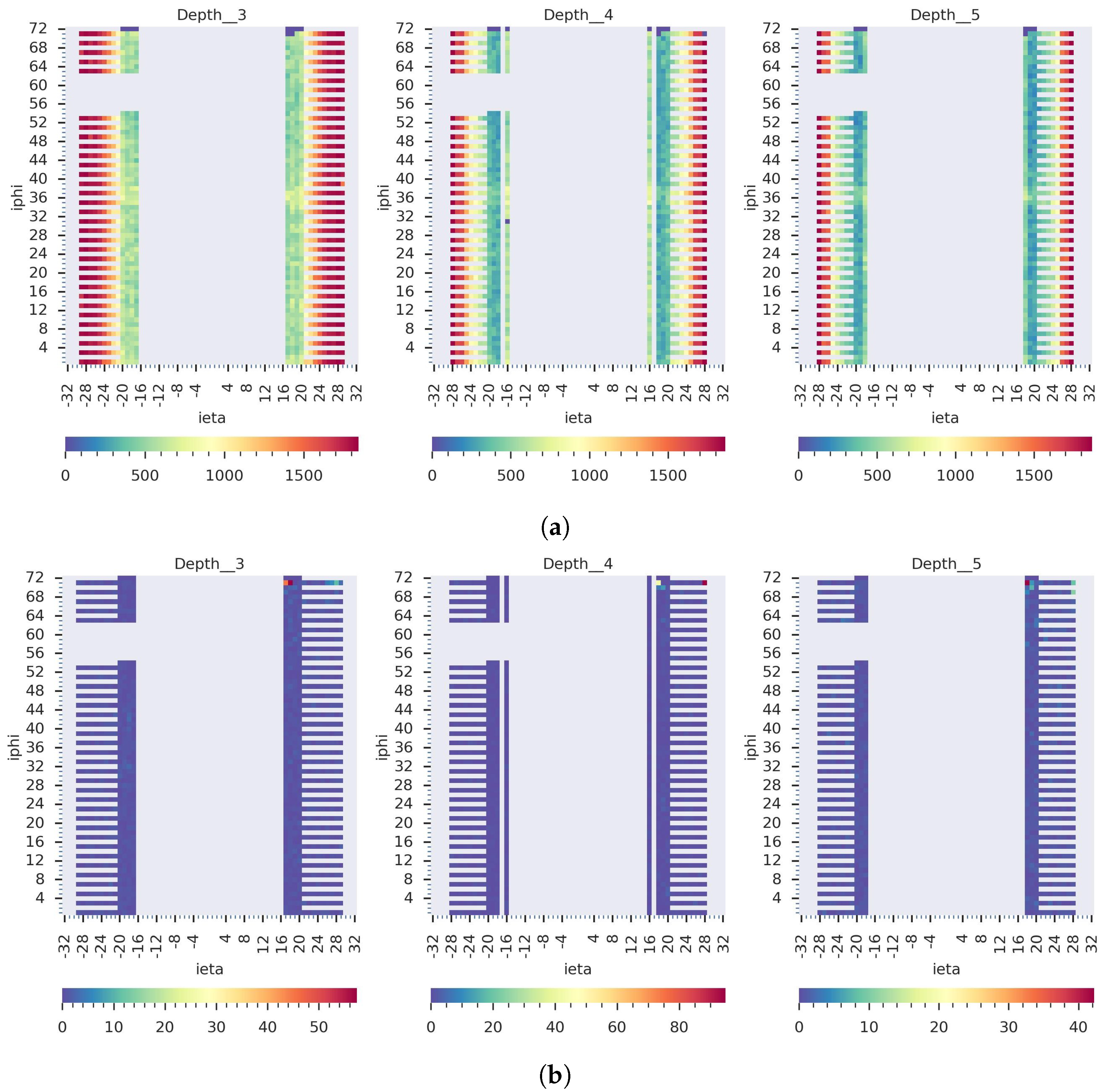
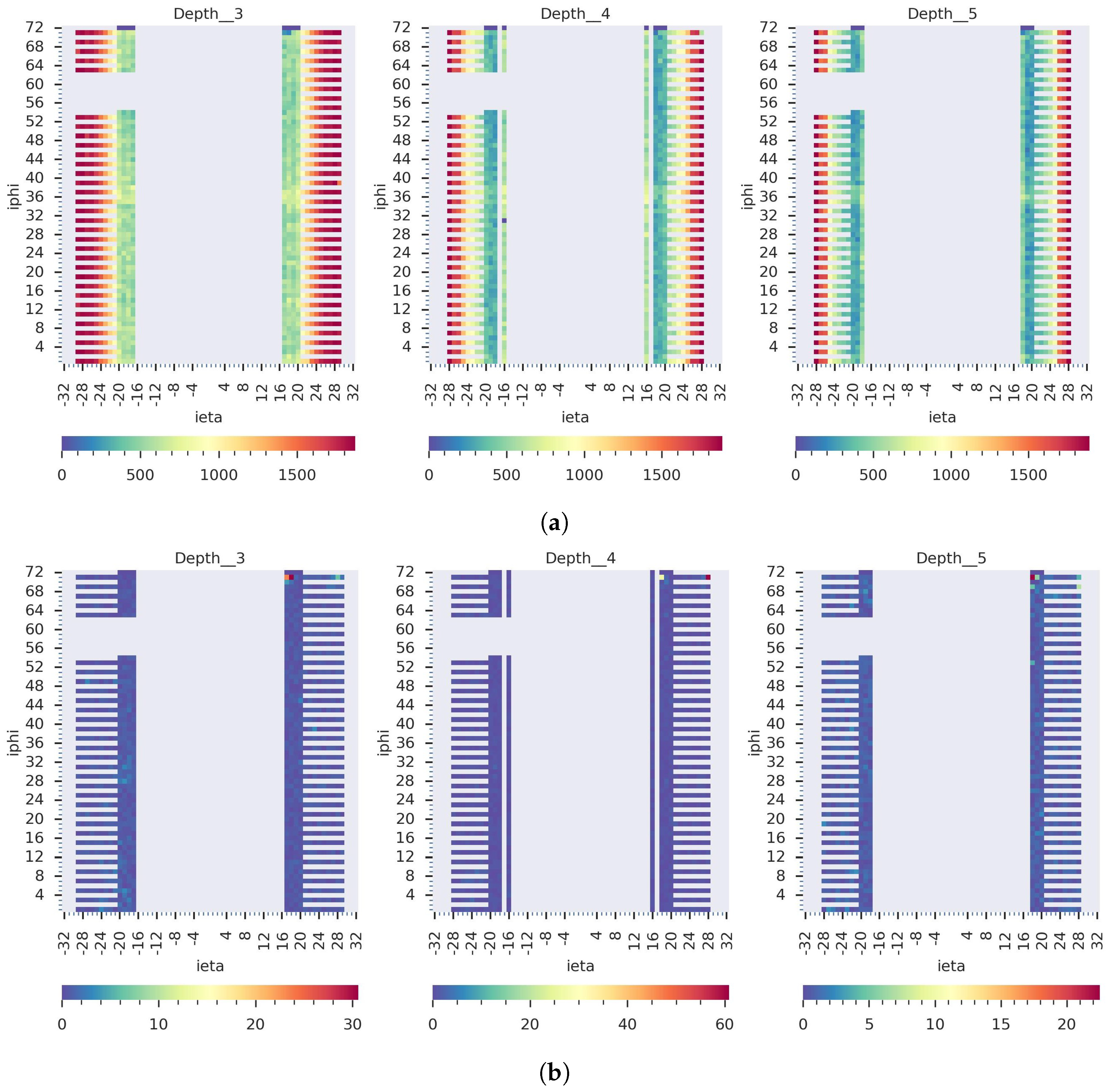
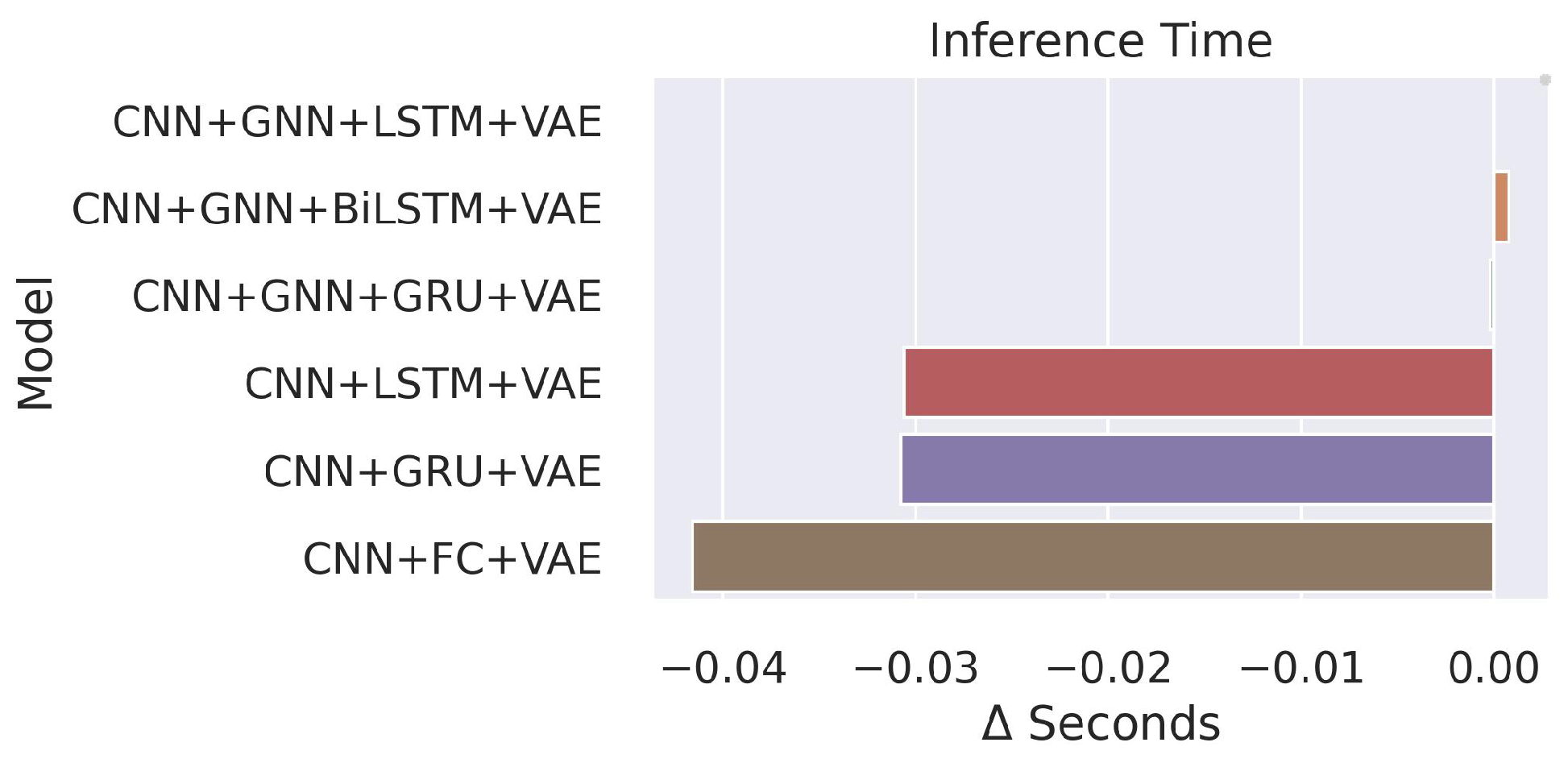
| Anomaly Type | Captured Anomalies | P | R | F1 | FPR |
|---|---|---|---|---|---|
| Dead Channel | 99% | 0.999 | 0.99 | 0.995 | 6.722 × 10−6 |
| 95% | 1.000 | 0.95 | 0.974 | 3.102 × 10−6 | |
| 90% | 1.000 | 0.90 | 0.947 | 2.068 × 10−6 | |
| Hot Channel | 99% | 0.999 | 0.99 | 0.994 | 9.113 × 10−6 |
| 95% | 1.000 | 0.95 | 0.974 | 1.939 × 10−6 | |
| 90% | 1.000 | 0.90 | 0.947 | 1.196 × 10−6 |
| Anomaly Type | Captured Anomalies | P | R | F1 | FPR |
|---|---|---|---|---|---|
| Dead Channel | 99% | 0.999 | 0.99 | 0.995 | 7.691 × 10−6 |
| 95% | 1.000 | 0.95 | 0.974 | 2.715 × 10−6 | |
| 90% | 1.000 | 0.90 | 0.947 | 1.616 × 10−6 | |
| Hot Channel | 99% | 0.999 | 0.99 | 0.995 | 5.461 × 10−6 |
| 95% | 1.000 | 0.95 | 0.974 | 1.357 × 10−6 | |
| 90% | 1.000 | 0.90 | 0.947 | 7.756 × 10−7 |
| Anomaly Type | FPR (90%) | FPR (95%) | FPR (99%) | |
|---|---|---|---|---|
| Degraded Channel | 80% | 1.636 × 10−3 | 3.614 × 10−3 | 2.988 × 10−2 |
| 60% | 1.329 × 10−4 | 3.834 × 10−4 | 1.550 × 10−3 | |
| 40% | 8.405 × 10−6 | 2.764 × 10−5 | 2.242 × 10−4 | |
| 20% | 2.263 × 10−6 | 5.173 × 10−6 | 2.505 × 10−5 | |
| 0% | 9.699 × 10−7 | 1.778 × 10−6 | 6.142 × 10−6 |
Disclaimer/Publisher’s Note: The statements, opinions and data contained in all publications are solely those of the individual author(s) and contributor(s) and not of MDPI and/or the editor(s). MDPI and/or the editor(s) disclaim responsibility for any injury to people or property resulting from any ideas, methods, instructions or products referred to in the content. |
© 2023 by the authors. Licensee MDPI, Basel, Switzerland. This article is an open access article distributed under the terms and conditions of the Creative Commons Attribution (CC BY) license (https://creativecommons.org/licenses/by/4.0/).
Share and Cite
Asres, M.W.; Omlin, C.W.; Wang, L.; Yu, D.; Parygin, P.; Dittmann, J.; Karapostoli, G.; Seidel, M.; Venditti, R.; Lambrecht, L.; et al. Spatio-Temporal Anomaly Detection with Graph Networks for Data Quality Monitoring of the Hadron Calorimeter. Sensors 2023, 23, 9679. https://doi.org/10.3390/s23249679
Asres MW, Omlin CW, Wang L, Yu D, Parygin P, Dittmann J, Karapostoli G, Seidel M, Venditti R, Lambrecht L, et al. Spatio-Temporal Anomaly Detection with Graph Networks for Data Quality Monitoring of the Hadron Calorimeter. Sensors. 2023; 23(24):9679. https://doi.org/10.3390/s23249679
Chicago/Turabian StyleAsres, Mulugeta Weldezgina, Christian Walter Omlin, Long Wang, David Yu, Pavel Parygin, Jay Dittmann, Georgia Karapostoli, Markus Seidel, Rosamaria Venditti, Luka Lambrecht, and et al. 2023. "Spatio-Temporal Anomaly Detection with Graph Networks for Data Quality Monitoring of the Hadron Calorimeter" Sensors 23, no. 24: 9679. https://doi.org/10.3390/s23249679
APA StyleAsres, M. W., Omlin, C. W., Wang, L., Yu, D., Parygin, P., Dittmann, J., Karapostoli, G., Seidel, M., Venditti, R., Lambrecht, L., Usai, E., Ahmad, M., Menendez, J. F., Maeshima, K., & the CMS-HCAL Collaboration. (2023). Spatio-Temporal Anomaly Detection with Graph Networks for Data Quality Monitoring of the Hadron Calorimeter. Sensors, 23(24), 9679. https://doi.org/10.3390/s23249679










